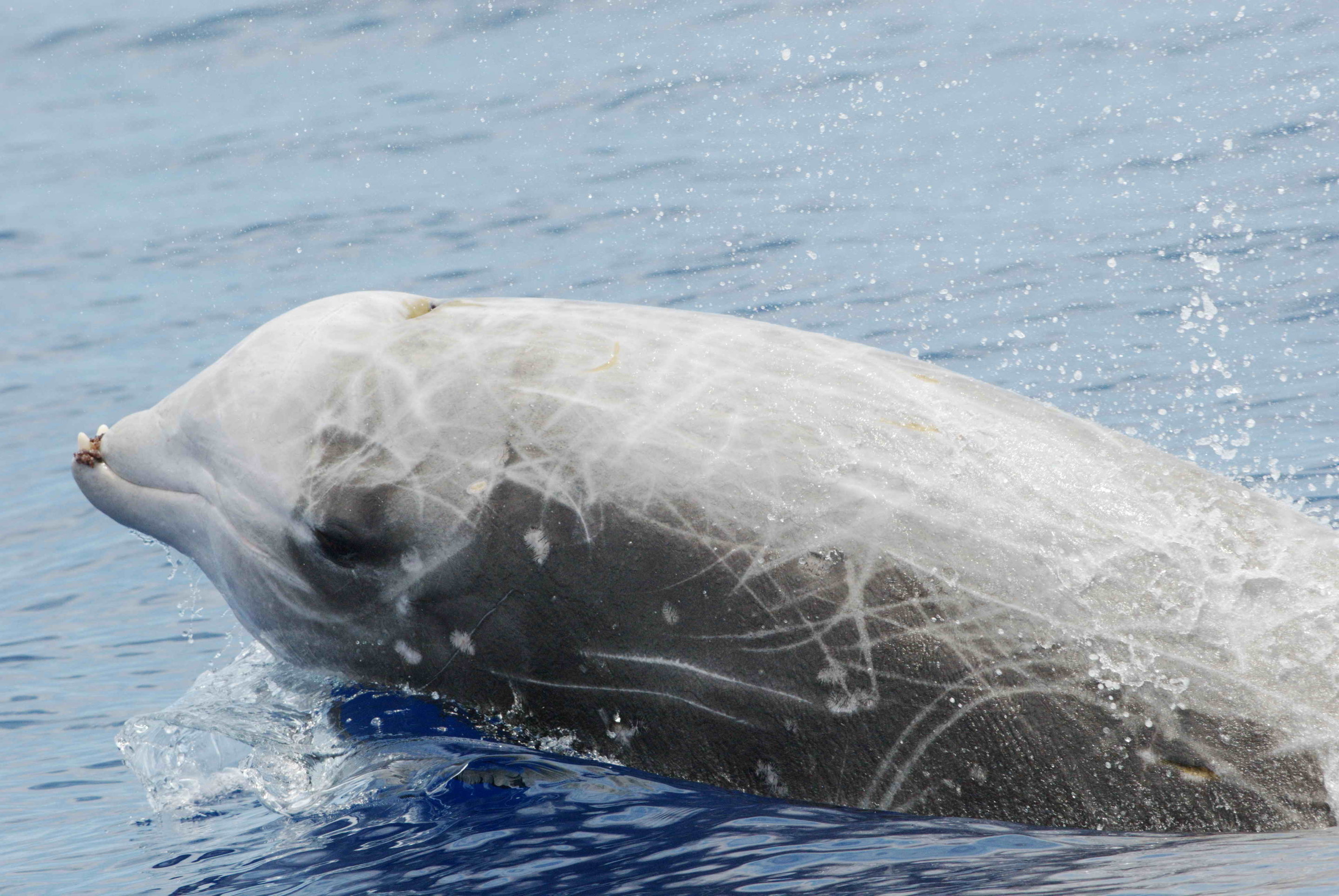Taxonomic Classification and Physical Characteristics

Spade toothed beaked whales – Spade-toothed beaked whales, scientifically classified as Mesoplodon traversii, belong to the family Ziphiidae within the order Cetacea. These elusive deep-diving marine mammals are characterized by their distinctive spade-shaped teeth and various other intriguing physical features.
Spade toothed beaked whales are mysterious creatures that dive deep into the ocean, their unusual teeth giving them a distinctive look. They’re rarely seen, but their enigmatic nature has captured the imagination of many, including Raphael Claus , an artist known for his surreal and dreamlike paintings.
In his work, he often depicts these whales as symbols of hidden depths and the unknown, reflecting the elusive and captivating nature of the spade toothed beaked whales.
Spade-toothed beaked whales are medium-sized cetaceans, with males typically measuring around 5.5 meters (18 feet) in length and weighing up to 1,300 kilograms (2,900 pounds). Females are slightly smaller, averaging around 5 meters (16 feet) in length and weighing approximately 1,000 kilograms (2,200 pounds).
Their bodies are streamlined and robust, with a dark gray or brownish-gray coloration on the back and a lighter gray or white underside. The most striking feature of spade-toothed beaked whales is their namesake spade-shaped teeth, which are present only in adult males. These teeth are used for fighting and social interactions rather than feeding.
Distribution, Habitat, and Population Status: Spade Toothed Beaked Whales

Spade-toothed beaked whales are elusive creatures that call the deep ocean their home. They’re like the ninjas of the whale world, disappearing into the darkness and making it tough for us to track them down.
These whales have a global distribution, but they’re most commonly found in the tropical and temperate waters of the Atlantic, Pacific, and Indian Oceans. They prefer to hang out in deep waters, typically between 300 and 2,000 meters (984 to 6,562 feet). They’re also known to venture into even deeper waters, but that’s like trying to find a needle in a haystack.
Population Size and Conservation Status
When it comes to population size, we’re still playing detective. Scientists are still trying to figure out how many spade-toothed beaked whales are swimming around. But based on what we know so far, they’re not exactly an endangered species. They’re classified as “data deficient,” which means we need more info before we can make a call on their conservation status.
However, like many other marine creatures, spade-toothed beaked whales face threats from human activities, including habitat loss, pollution, and noise from ships. So, while they’re not on the brink of extinction, we need to keep an eye on them and make sure they don’t end up there.
Behavior and Ecology
Spade-toothed beaked whales are highly social animals that live in groups of up to 10 individuals, but groups of up to 50 have been observed. They are known to form long-term bonds and have a complex communication system that includes whistles, clicks, and pulsed calls.
Social Behavior
Within their groups, spade-toothed beaked whales have a clear social hierarchy, with dominant males and females leading the group. They engage in various social behaviors, such as body rubbing, headbutting, and tail slapping, to maintain their bonds and establish dominance.
Feeding Habits, Spade toothed beaked whales
Spade-toothed beaked whales are deep-diving predators that primarily feed on squid, but they also consume fish and crustaceans. They use echolocation to locate their prey and employ suction feeding to capture it. They are known to make deep dives of up to 1,000 meters in search of food.
Reproductive Biology
Spade-toothed beaked whales reach sexual maturity at around 7-10 years of age. Mating occurs during the summer months, and females give birth to a single calf after a gestation period of about 12 months. Calves are born weighing around 100 kilograms and are nursed for up to two years.
Spade toothed beaked whales are deep-diving whales that are found in all oceans. They are named for their spade-shaped teeth. The home run derby participants here are all great hitters, but they don’t have the same kind of teeth as spade toothed beaked whales.
Spade toothed beaked whales use their teeth to catch fish, squid, and other prey.